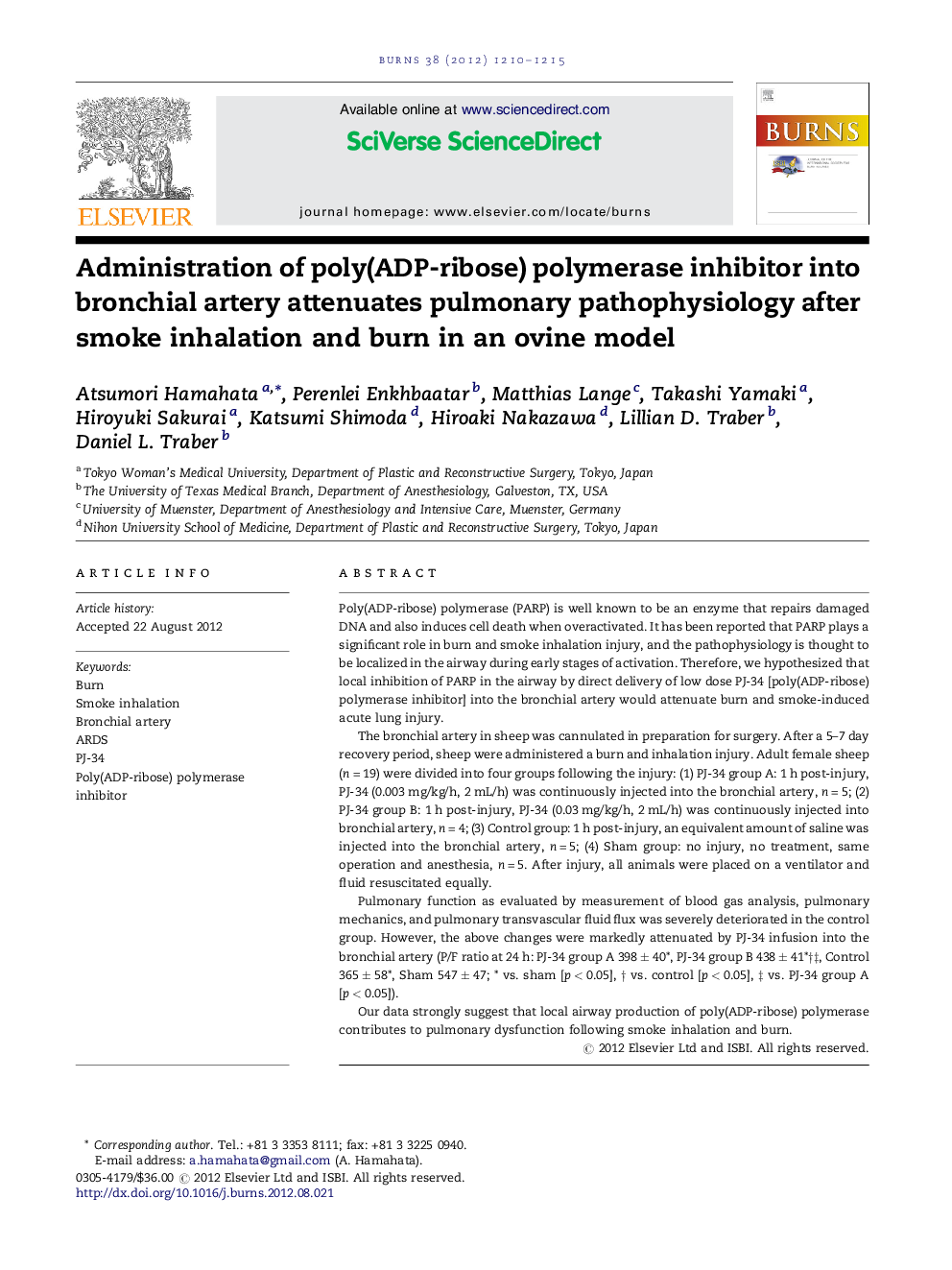| کد مقاله | کد نشریه | سال انتشار | مقاله انگلیسی | نسخه تمام متن |
|---|---|---|---|---|
| 3105173 | 1191674 | 2012 | 6 صفحه PDF | دانلود رایگان |

Poly(ADP-ribose) polymerase (PARP) is well known to be an enzyme that repairs damaged DNA and also induces cell death when overactivated. It has been reported that PARP plays a significant role in burn and smoke inhalation injury, and the pathophysiology is thought to be localized in the airway during early stages of activation. Therefore, we hypothesized that local inhibition of PARP in the airway by direct delivery of low dose PJ-34 [poly(ADP-ribose) polymerase inhibitor] into the bronchial artery would attenuate burn and smoke-induced acute lung injury.The bronchial artery in sheep was cannulated in preparation for surgery. After a 5–7 day recovery period, sheep were administered a burn and inhalation injury. Adult female sheep (n = 19) were divided into four groups following the injury: (1) PJ-34 group A: 1 h post-injury, PJ-34 (0.003 mg/kg/h, 2 mL/h) was continuously injected into the bronchial artery, n = 5; (2) PJ-34 group B: 1 h post-injury, PJ-34 (0.03 mg/kg/h, 2 mL/h) was continuously injected into bronchial artery, n = 4; (3) Control group: 1 h post-injury, an equivalent amount of saline was injected into the bronchial artery, n = 5; (4) Sham group: no injury, no treatment, same operation and anesthesia, n = 5. After injury, all animals were placed on a ventilator and fluid resuscitated equally.Pulmonary function as evaluated by measurement of blood gas analysis, pulmonary mechanics, and pulmonary transvascular fluid flux was severely deteriorated in the control group. However, the above changes were markedly attenuated by PJ-34 infusion into the bronchial artery (P/F ratio at 24 h: PJ-34 group A 398 ± 40*, PJ-34 group B 438 ± 41*†‡, Control 365 ± 58*, Sham 547 ± 47; * vs. sham [p < 0.05], † vs. control [p < 0.05], ‡ vs. PJ-34 group A [p < 0.05]).Our data strongly suggest that local airway production of poly(ADP-ribose) polymerase contributes to pulmonary dysfunction following smoke inhalation and burn.
Journal: Burns - Volume 38, Issue 8, December 2012, Pages 1210–1215